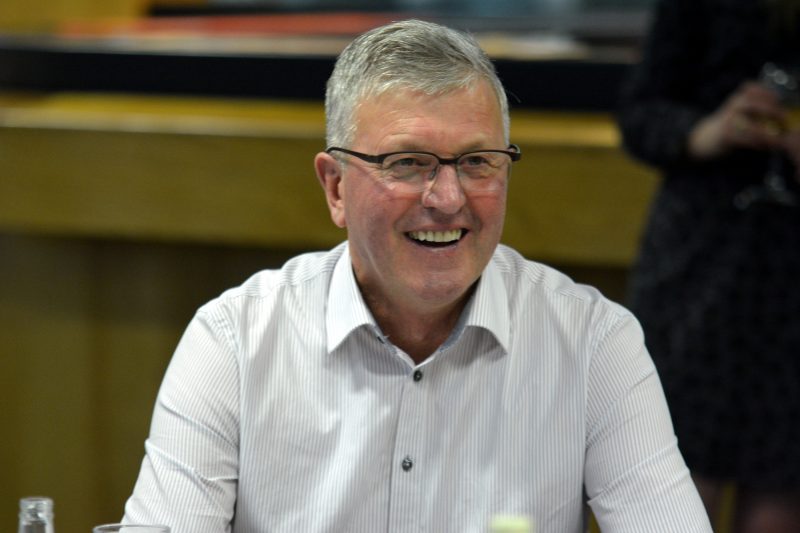In Brief
- Hall of Fame inductions a highlight of annual awards night.
- Standing ovation for Roles.
- Jones entertains audience with stories of bygone days.
The Tasmanian Thoroughbred Racing Hall of Fame boasts many former champions and stars of the turf and at Ladbrokes Park on Friday night five more inductees made their way into the exclusive club.
On a night that celebrates the industry’s top achievers the Hall of Fame component of the night usually evokes emotion and last night’s inductions were no exception.
Terry Roles
One of Tasmanian racing’s most popular personalities Terry Roles was inducted in the trainer category and as he made his way to the stage to receive his induction certificate it was to a standing ovation.
Roles enjoyed a long and successful training career spanning more than 30 years during which time his name became synonymous with Deloraine Racecourse where he was based.
He trained his first winner Glen Leith at Deloraine in February 1982 and his last Das Good at Mowbray in August 2014.
In between he won more than 500 races including many feature events in Tasmania and interstate.
Roles accepted his induction certificate at the annual awards dinner at the Elwick Racing Centre, where about 200 gathered to celebrate the thoroughbred high achievers from last season and this year’s HOF inductees, of which there were five.
“Being inducted into the Hall of Fame is without doubt the highlight of my racing career,” Roles said.
“I loved every moment of my time in racing and to have been given this honour is unbelievable.”
Roles has been battling Motor Neurone Disease for the past 18 months and like all other hurdles he has faced, he is tackling the disease head-on.
His career highlights included winning the Tasmanian Grand National Steeple five times.
He won with Lake Thor (twice), Slick Khan, Flash Echo and Stockton and he also notched four wins in the Tasmanian Grand National Hurdle with River Boy, Rancher Bay, Lake Antimony and Our Major.
Roles also won feature jumps races in Victoria including the Australian Steeple with Lake Thor, the Ian McDonald Steeple with River Boy and the Melbourne Cup Day Hurdle and Galleywood Hurdle with Inchgower.
Inchgower was also a smart galloper on the flat, winning the Tasmanian Stakes, Golden Mile, Deloraine Cup, Newnham Cup and Easter Cup so it is little wonder he was Terry’s favourite horse.
Terry was equally adept at training young horses and won the 2YO Gold Sovereign Stakes with Magpies Chorus and Found East, the Tasmanian Derby with Father Floyd, and the Strutt Stakes with Silver Lake and Mucho Dinero.
Trevor Jones
Also inducted was former star jumps jockey Trevor Jones who was the leading jumps jockey in Victoria on numerous occasions during a golden era for jumps racing when his rivals included one of his best mates, the legendary Ted Byrne.
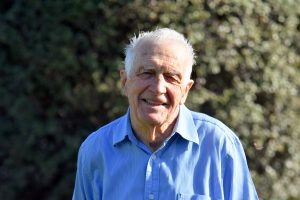
Trevor Jones.
Jones’ biggest wins included the 1954 VRC Grand National Steeple on Fearless Chief, 1963 VRC Grand National Hurdle on Coltara, 1959 South Australian Grand National Hurdle on Smart Solly, 1967 Tasmanian Grand National Steeple on Young Gallant and 1962 Mornington Great Southern Steeple on Grey Jet.
When he retired in 1974, Jones returned to his place of birth and later held an A grade trainer’s licence and he continued riding his own work until he was almost killed in a trackwork accident at Elwick.
Jones, 86, who lives at Longford with his wife Hanneke, said he was thrilled to receive such a great award.
“I had a great career and to think that people still remember me for what I did is amazing, and I feel privileged to have my name included amongst so many true greats of Tasmanian racing,” Jones said
Jones enjoyed a successful association with some of the biggest names in Australian racing including owners Sir Reginald Ansett and Sir Henry Bolte and trainers Des McCormick, Ray Hutchins, and the legendary Theo Howe.
Born near Hobart, Trevor moved to Victoria as a 15-year-old to pursue a career in racing.
His first master was trainer Tom Bradfield, a son of four-time Melbourne Cup winning trainer Richard Bradfield.
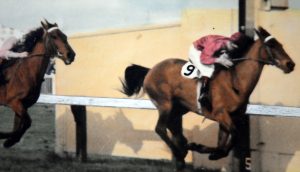
Trevor Jones wins the 1954 Grand National Steeplechase at Flemington aboard Fearless Chief.
In the early part of his career, Trevor rode successfully on the flat, with one of his more memorable wins a ‘straight six’ race at Flemington on the high-class galloper Tudor Hill who went on to win two Doncaster Handicaps in Sydney.
When weight became an issue, he switched to jumps racing where he achieved most of his success.
He spent 25 years riding over the obstacles and, when unable to get a doctor’s clearance to continue, he moved to Western Australia to ride as a heavyweight on the flat.
When he retired in 1974, Trevor returned to his place of birth and later held an A grade trainer’s licence and he continued riding his own work until he was almost killed in a trackwork accident at Elwick.
Now 86, Trevor lives in retirement at Longford with his wife Honnika.
Sheet Anchor
Two horses made their way into the elite club in 1885 Melbourne Cup winner Sheet Anchor that was bred at Calstock at Deloraine by the Field family and Anzaas, a former New Zealand gelding brought to Tasmania by Longford trainer Ian Hay and the gelding subsequently dominated middle distance and staying events in the late 1970s and early 80s in Tasmania and interstate.
Sheet Anchor’s race record was, at best, moderate as a three and four-year-old in Tasmania but illness prevented the horse from realising his full potential.
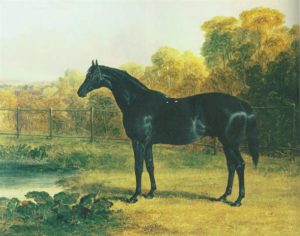
Sheet Anchor winner 1885 Melbourne Cup.
When sold to Victorian owner Martin Loughlin for 40 Guineas as a rising six-year-old, Sheet Anchor slowly but surely began to make his mark in staying events.
He placed third in the 1883 Launceston Cup behind Rhesus but the following year he was triumphant after which he emerged as a serious stayer.
He was third in the 1985 VRC Newmarket Handicap to Coronet and followed up with a game second in the Australian Cup (3600m) before travelling to Sydney for the Doncaster handicap in which he was unplaced.
Sheet Anchor was then asked to tackle the winter jumps season in Victoria but without success.
He astonished all but those who snared the 50-1 bookmakers offered on Melbourne Cup day in 1885 when he ran his rivals ragged to capture the race that stops a nation.
The 1885 Melbourne Cup was surrounded by controversy after it was alleged Sheet Anchor’s jockey hit the runner-up, Grace Darling, over the head with his whip approaching the finish line, but no protest was lodged by Grace Darling’s owner.
Comments in newspapers of the day described Sheet Anchor’s Melbourne Cup triumph as one of courage and determination and proof that good stamina was the key element to winning a Melbourne Cup – nothing has changed.
Sheet Anchor won a Launceston Cup before he was sold to Victorian interests and it is said his rider in the 1885 Melbourne Cup was alleged to have hit the runner-up over the head with the whip just prior to the winning post but no objection was lodged.
Anzaas
Anzaas was an outstanding Tasmanian galloper of the early 1980s.
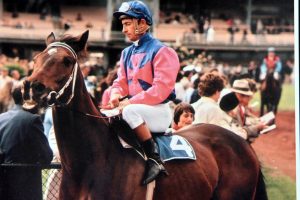
Anzaas after winning at Flemington.
Although he had won only one race from more than 20 starts in New Zealand, Longford trainer Ian Hay spotted his potential and bought him for $10,000 on behalf of Sheffield owners Snow & Nancy Aylett.
The gelding went on to win 13 races and $70,796 in stakes in Tasmania and interstate.
In the summer of 1981, Anzaas won the Launceston Cup in record time, the WFA George Adams Stakes by four lengths in record time and the Newham Cup by six lengths.
He is the only horse ever to win those three races in the same season and it earned him the Tasmanian horse of the year award.
Later that year, Anzaas campaigned in Melbourne where he won the Palace Welter at Caulfield and performed consistently at the highest level, finishing second in Herbert Power Hcp, fourth in Coongy Hcp, third in Moonee Valley Cup and fourth in Dalgety Hcp.
He also finished unplaced in the Melbourne Cup where he was well in commission at 15-1 (the same price as eventual winner Just A Dash).
He unfortunately was injured and missed two years of racing.
Connections were told by vets that he would never race again but Anzaas was rehabilitated with long beach work and returned to training with Vic Shaw at East Devonport in late 1983.
Although not the same horse he was in his heyday, he still managed to run second in a Jockey Club Cup, a close fourth in the Devonport Cup and finish just behind the placegetters in both the Hobart and Launceston cups.
He was reunited with his original jockey Max Baker for the first time in 2-1/2 years when they combined for his final win in the 1984 Brallos Hcp.
Anzaas was retired as an eight-year-old after a successful career that could have been even better had he not been sidelined for so long when in his prime.
Ross Fouracre
The late Ross Fouracre was inducted in the Associate category for his services to club administration.
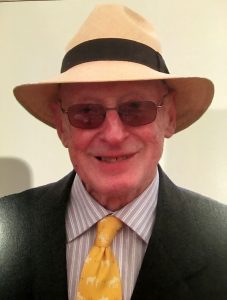
Ross Fouracre.
Fouracre was a man devoted to thoroughbred racing and who spent the greater part of his life dedicated to improving the industry.
His involvement in racing began in Melbourne, where he was invited to join the staff of the Victorian Racing Club as 17-year-old.
The experience he gained with the VRC over eight years was extensive.
He was closely associated with the conduct of the Victorian Apprentice Jockey School and the success of the school was greatly attributed to his personal efforts.
In 1954, aged 25, Ross decided to leave the family home in Essendon and move to Hobart to assume the role of assistant to the secretary of the Tasmanian Racing Club.
The role undertaken by Ross was not solely to assist with racing matters.
He also assisted with the running of the Royal Agricultural Society of Tasmania, Junior Farmers Clubs of Tasmania, the Printing and Allied Trades Employers Association of Tasmania, the Bloodhorse Breeders Association (Tasmanian Division) and the Tasmanian Botanical Gardens.
In July 1961 the Tasmanian Racing Club, under the chairmanship of Mr. Horace Strutt, offered the secretary position to Ross, following the retirement of long-serving secretary Brian Osborne.
At the same time, Ross received an attractive offer to return to the VRC but as he had developed a great love of Tasmania, he opted to stay and take on the TRC secretary role.
Ross was at the helm of the TRC during many major changes to the industry, including the introduction of the TAB in 1974 as well as upgrades to the Elwick track and facilities.
Ross was never one to seek the spotlight, preferring to work tirelessly to achieve goals while caring little for the kudos that was readily accepted by others.
His feats are well documented in Bert Wicks’ “Men of Influence” a history of the Tasmanian Racing Club.
He retired in 1983 with The Mercury reporting – “Perhaps the shock of the year was the resignation of Ross Fouracre after 29 years with the Tasmanian Racing Club”.
Although Ross had decided to leave the TRC, he would not move away from thoroughbred racing.
The TRC awarded him Life Membership and he was appointed as the thoroughbred code’s representative on the Racing Trust that had just been formed.
It was unusual for a race meeting to be held at his beloved Elwick without Ross in attendance as he regarded his racing friends as part of his extended family.
